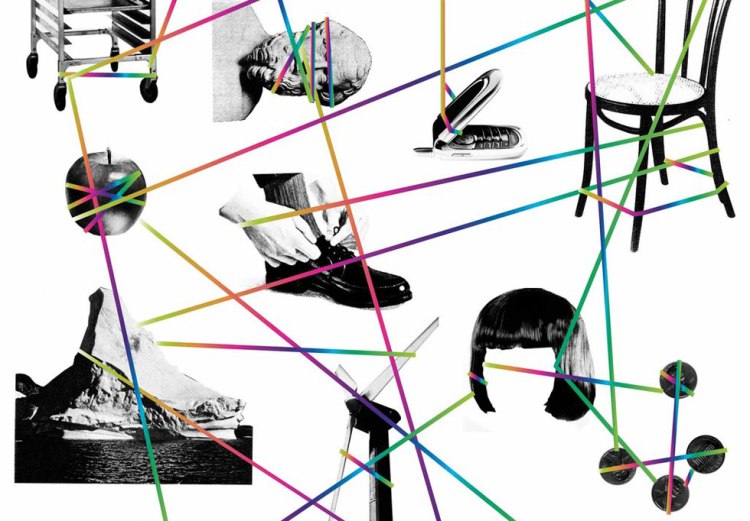Qualcomm, LG, the Linux Foundation, and a whole team of heavy-hitters in the Internet of things world are coming together and forming an alliance.
Thrilling Star Wars terminology aside, the AllSeen Alliance, as it’s called, will take on the monumental, innovation-accelerating task of creating and maintaining unified standards for device-to-device communication.
That’s a mouthful. Here’s what it really means: You will have a smarter fridge next year rather than in 2020 — all because your fridge and your TV and the APIs they run on will share a common brain.
Example time: You sign up for a smart lock from Lockitron and a smart thermostat from Nest. The two systems talk to each other and automatically shut off the heat when you leave the house for more than 20 minutes. You’ve also got a smart security camera at the front door that can send a picture to your smart TV and show you who’s ringing your doorbell — the not-to-be-ignored pizza delivery lady or the totally ignorable whiny neighbor.
Here’s the full roster of AllSeen Alliance charter members: Qualcomm, LG Electronics, Sharp, Haier, Panasonic, Silicon Image, Cisco, TP-LINK. Canary, doubleTwist, Fon, Harman, HTC, Le Shi, Lifx, Liteon, Moxtreme, Musaic, Sears Brand Management Corporation, Sproutling, The Sprosty Network, Weaved, and Wilocity.
The alliance’s goal is to “ensure that more and more electronic products can work together, regardless of brand, in the new era of smarter technology,” according to a statement from the Linux Foundation.
“The move is aimed at accelerating the Internet of everything, which will transform homes and businesses with a wide range of everyday devices, objects and machines that are always connected and communicating.”
The alliance is being hosted by the Linux Foundation and will be the largest consortium of its kind.
“Some people view it as a monolithic space where you can solve everything all at once,” said Qualcomm president Rob Chandhok in a phone chat with VentureBeat last week.
“We’re not trying to make that claim. However, for a lot of the cases for the Internet of things, the shape of the network is different, where being near something is more important than being virtually connected.”
Linux Foundation executive director Jim Zemlin added in the same conversation, “There have been attempts to solve it or around standardizations. But the code really talks here. … By actually having the source code available for companies to get to market immediately, that’s the big difference. And it works best when you have it at a nonprofit where the code is under an open-source license.”
And if, for example, GE or Maytag decide not to play along, it only slows efforts down; it doesn’t represent a total roadblock. But with enough clout, the alliance also gets some leverage by virtue of its own adoption rates.
“At some point, people have to use standards they didn’t develop because it’s part of the ecosystem. There will always be someone doing a vertical solution,” said Chandhok.
And in a climate of big privacy and security concerns, inter-device communication is even more compelling for consumers and businesses.
“One of the selling points of [Qualcomm’s open-source technical solution for D2D communication] AllJoyn is by its very nature, it’s more private than cloud-based [systems],” said Chandhok.
“All the devices talk to each other in my house, and they don’t go out to the cloud until I tell them or allow them or need them to. We think it’s important for that communication to stay local unless it needs to go out.”
There’s also a security benefit in the open-source nature of the project.
“A lot of security vulnerabilities come in through bad code,” said Zemlin. “We expect that, with the number of organizations looking at it, it’ll get better and better over time.”
As for Linux’s involvement, said Chandhok, “It’s already the majority market share in most embedded devices. It develops at 10,000 lines of code a day; it changes eight times an hour. And if you’re building a music player or a television, you’re insane not to leverage that source code.”
Ultimately, accelerating innovation means creating vastly simpler and more “magical” experiences for consumers — in other words, creating the future of science fiction in a way that’s less malevolent than sensor-based spying, government backdoors, and cloud-stored data.
“The thrust of AllJoyn has to do with believing that the future will be lots of smart things talking to each other in a way that’s not predetermined,” said Chandhok. “Things come into your house or your car, and you just interact with them.
“Right now, we think of things being controlled or controllers. … We think the Internet of things is going to be an ecosystem of interfaces and APIs. You can start out with a light switch just being a light switch, but it can also send a signal that you turn it off and on, and it can learn your patterns and get smarter. It can notice that you always turn on another light after you turn on this light, and it can ask, ‘Do you want me to turn this light on?'”
We’ll be following this alliance to see how well it delivers on these promises — and what other companies decide to climb aboard.


